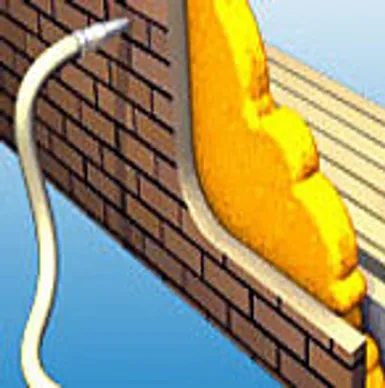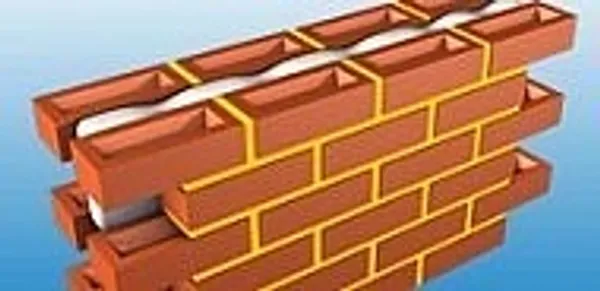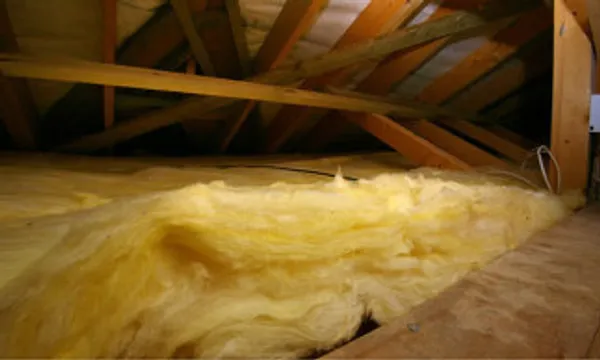Cavity Wall Insulation for Energy Savings
About a third of all the heat lost in an uninsulated home escapes through the walls. Heat will always flow from a warm area to a cold one. In winter, the colder it is outside, the faster heat from your home will escape into the surrounding air.
Most houses built from the 1990s onwards have wall insulation to keep the heat in, but if your house is older than that it may not have any wall insulation. If this is the case, you may be heating the outside air, instead of just heating your home. Most types of wall can be insulated in one way or another. If you have a typical house with cavity walls, you could save up to £140 per year in heating bills just from insulating the walls.

The first thing you need to find out is what sort of walls you have.
Cavity and solid walls
Houses in the UK mostly have either solid walls or cavity walls:
- A cavity wall is made up of two walls with a gap in between, known as the cavity; the outer leaf is usually made of brick, and the inner layer of concrete.
- On the other hand, a solid wall has no cavity; each wall is a single solid wall, usually made of brick or stone.
Working Out Your Wall Type
If your house was built after the 1920s, it is likely to have cavity walls.
Older houses are more likely to have solid walls.
If you can see the brickwork on the outside of the house, look at the pattern of the bricks.
If your home has cavity walls, the bricks will usually have a regular pattern like this

If your home has solid walls, the bricks will have an alternating pattern like this

If the brickwork has been covered, you can also tell by measuring the width of the wall. examine a window or door on one of your external walls. If a brick wall is more than 260mm thick then it probably has a cavity; a narrower wall is probably solid. Stone walls may be thicker still but are usually solid.
Non-Standard Wall Types
If your house is a steel-frame or timber-framed building, or is made from pre-fabricated concrete different rules apply for insulation. Generally, these houses don’t have a cavity to fill, but it may be possible to insulate them in the same way as a solid wall. However, you may need a specialist company to insulate a non-standard wall. For further advice or to find an installer who can help you, contact the National Insulation Association.
Cavity Wall Insulation
If your home was built after 1920, the chances are that its external walls are made of two layers with a gap or cavity in between. Cavity wall insulation fills that gap, keeping the warmth in to save energy. It can also help reduce condensation inside the house if this is a problem on your external walls.
Is Cavity Wall Insulation Suitable for Your Home?
Your home will usually be suitable for cavity wall insulation if it meets these criteria:
Its external walls are unfilled cavity walls.
Your cavity is at least 50mm wide.
The masonry or brickwork of your property is in good condition.
It is more than 10 years old (most newer houses will have insulation already).
The walls are not exposed to driving rain.
- Are your external walls accessible?

Cavity wall insulation is blown into the cavity from the outside of a house. Every part of the wall must be filled with insulation, so it’s important that the installer can reach all your external walls.
If your home’s exterior walls are joined to another house, the installer will need to insert a cavity barrier to contain the insulation, so your neighbours aren’t affected.
What If Your House is Damp?
If you have any damp patches on your internal walls then they should not be insulated until the problem is resolved. Speak to a builder who specialises in damp prevention.
How is Insulation Installed?
To insulate your cavity walls, the installer drills small holes around 22mm in size at intervals of around 1m in the outside wall of your home. The installer then blows insulation into the cavity using special equipment. Once all the insulation is in, the installer fills the holes in the brickwork so you’ll barely notice them.
Filling cavity walls is not a job you can do yourself, you will need to employ a registered installer. A professional can do the job in around two hours for an average house with easily accessible walls. It shouldn’t make any mess.
What is Insulation Made of?
Cavity wall insulation can be made from three types of material: mineral wool, beads or granules, or foamed insulants.
All three are manufactured according to British standards. Foam insulation systems should be certified by the British Board of Agrément and installed according to strict guidance laid out in the associated certificates.
GreenSkye Energy are proud to announce that they are offering FREE SOLAR with conjunction with SunEdison.
Heat Loss Control with Loft Insulation
Roof and Loft
In an uninsulated home, around 35 percent of heat loss is through the walls and 25 percent is lost through the roof. The remaining 40 percent is lost through doors, windows and the floor. The better insulated your home is the less heat you will be losing, meaning you do not need to run your heating as much (saving you money!).
Insulating your property will help reduce your energy consumption and lower your fuel bills. Insulation can also help alleviate dampness, making it a healthier home to live in.

Heat energy is transferred from homes by conduction through the walls, floor, roof and windows. It is also transferred from homes by convection. For example, cold air can enter the house through gaps in doors and windows, and convection currents can transfer heat energy in the loft to the roof tiles.
CONTACT USChoosing Loft Insulation
Easy Access and Regular Joists
If your loft is easy to access and has no damp or condensation problems it should be easy to insulate. It is possible to do it yourself.
If access is easy and your loft joists are regular, you can use rolls of mineral wool insulation.
The first layer is laid between the joists – the horizontal beams that make up the floor of the loft – then another layer is laid at right angles to cover the joists and make the insulation up to the required depth. This can be done by someone competent in DIY or a professional installer.
Storage or Living Space
If you plan to use the loft or attic for storage, you will want to lay boards over the joists. Unfortunately, if you only insulate between the joists before doing this, the insulation won’t be thick enough.
Useful Tips for Better Home Insulation

Year Experience
Insulate between the joists with mineral wool and then lay rigid insulation boards on top, with wooden boarding on top of that. You can buy insulation boards pre-bonded to floor boarding to make the job easier. Or raise the level of the floor so you can fit enough mineral wool beneath the new floor level.
If you want to use your loft as a living space, you can insulate the roof instead of the floor by fixing rigid insulation boards between the roof rafters. Boards must be cut to the correct width so that they fit snugly between the rafters. They can then be covered by plasterboard. Rafters aren’t usually very deep, so to get the best performance you may have to insulate over them as well, using insulated plasterboard. If there isn’t room to do this, make sure you use the highest performance insulation board.
GET IN TOUCHInaccessible Loft Spaces
If your loft is hard to access, you can have blown insulation installed by a professional, who will use specialist equipment to blow loose, fire-retardant insulation material made of cellulose fibre or mineral wool into the loft. This doesn’t usually take more than a few hours.
Flat Roofs
A flat roof should preferably be insulated from above. A layer of rigid insulation board can be added either on top of the roof’s weatherproof layer or directly on top of the timber roof surface with a new weather-proof layer on top of the insulation. This is best done when the roof covering needs replacing anyway. If your flat roof needs to be replaced anyway you must now insulate it to comply with building regulations.
It is possible to insulate a flat roof from underneath, but this can lead to condensation problems if not completed correctly.
Installing flat roof insulation could save you similar amounts on your heating bills to loft insulation. The savings will vary depending on how much of the property has a flat roof.
Damp Lofts
Insulation stops heat escaping from living spaces, so it will make your loft space cooler, which could make existing damp or condensation problems worse. Get professional advice before installing insulation to see if you can fix the damp problems first.
Pipes, Water Tank and Loft Hatch
Insulating between the joists of your loft will keep your house warmer but make the roof space above colder. Pipes and water tanks will be more likely to freeze, so you will need to insulate them. If your water tanks are some distance from the loft hatch, you will also need something to walk on for safe access.
The cooler air in your insulated loft could mean that cold draughts come through the loft hatch. To prevent this fit an insulated loft hatch and put strips of draught-excluding material around the hatch edges.